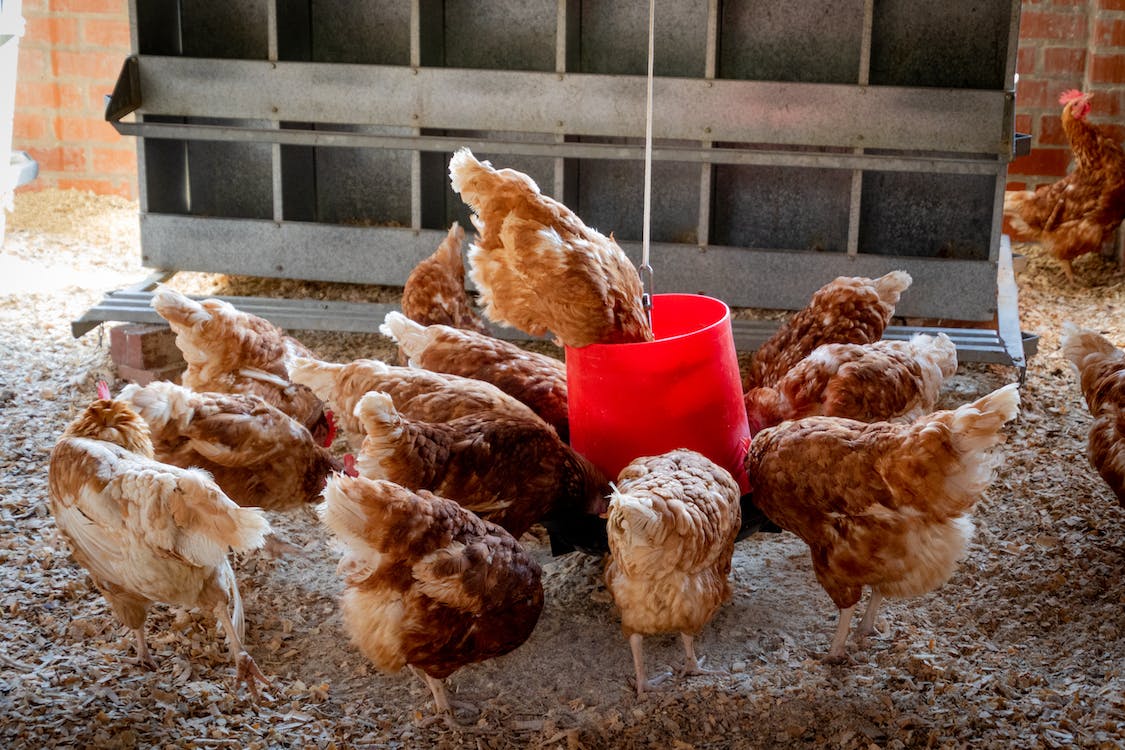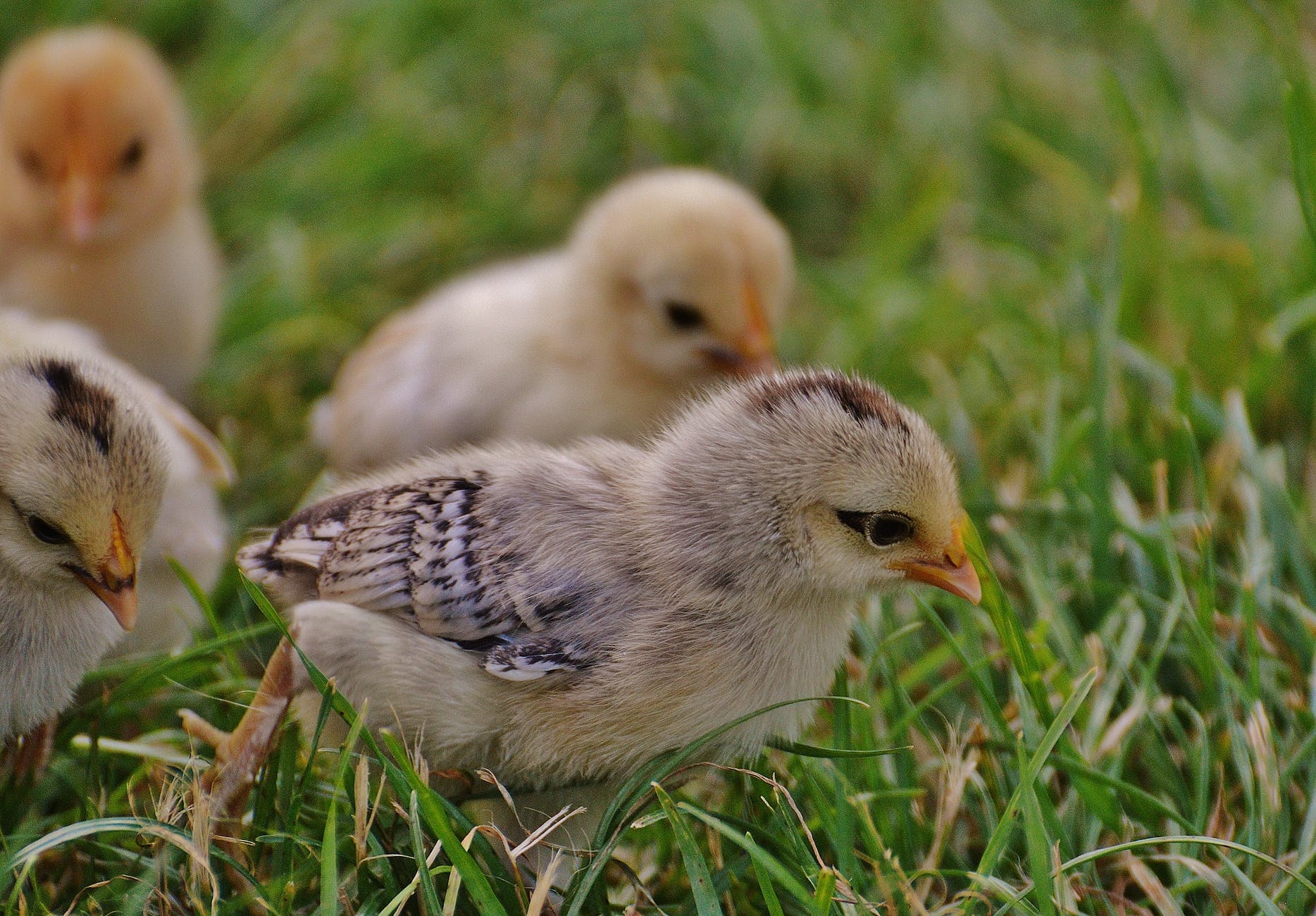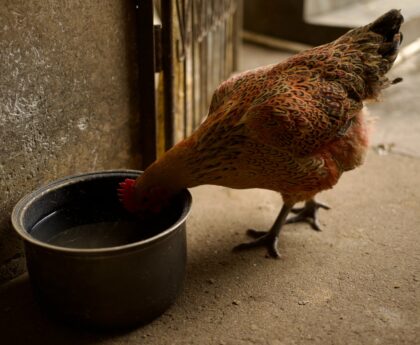By: Mini Hobby Farmer Stephanie
I do make a money on the links provided within this blog; however, it does not cost more for you to buy. I appreciate you supporting my small business. I am not a vet-I’m just a long-time chicken owner and small business owner.
Imagine waking up to farm fresh eggs every morning. And they are from your own chickens! It is possible and this article will go through the steps of setup and getting your new flock started.
Check Local Ordinances
The first thing you want to do is check your ordinance in your area. This can be found online. If you are unable to find the ordinance in your area you might need to make a call to the city offices. You want to be sure to ask them how many chickens are allowed and also if you are permitted to have a rooster. As you can imagine they can be deemed a noise nuisance. I personally live on a small farm of 17 acres that is zoned agriculture, so this is not an issue for me. We have a farm that is not too far away from us and their roos crow all night long.
Investing in Housing
The next thing to consider before deciding on your chicken type is housing. Typically 6 chickens are allowed within the city limits. Given that you will want about 90 square feet of space. A coop that is 4×4 will do. I do recommend that you search Pintrest for some free plans to build a simple coop. But, in the event that you are not woodworking savvy, you can get a coop on Amazon or at Tractor Supply or Rual King. Something like this https://amzn.to/3uMOlcH with a bigger run would suffice if they are not going to free range. Since I have 17 acres I just let mine roam. If you purchase a run from Amazon, please just read those reviews and know you will probably have to do some extra things to it. I plan to buy one of these: https://amzn.to/3uPQPaa and then add hardware cloth around the bottom to keep out predators, you can even bury it a bit to deter those predators that dig. I would also place T-posts in the corners to give it stability and keep it from blowing away if a tarp is used. Or you can get a smaller one ready to use https://amzn.to/3Wiprxe.
I utilize the coop for food and place waterers outside in the spring/summer/fall and then place inside on a heater in the winter, or just refill rubber feed pans outside daily. You can get them here: https://amzn.to/3Pr9W47. The most important consideration when getting your coop and run you are going to want something that has convenient doors for collecting eggs, cleaning, and giving food and water. Make it easier to do the chores so you can spend more time talking with the chickens.
Remember to get shavings for the floor of the coop and hay or straw for the nest boxes. Some use sand for the floor as well which makes the coop more litterbox like for easy cleaning.
Waterers
You can use something simple like https://amzn.to/3FQzDI8. This is a basic 5-gallon waterer. You may want something smaller if you have to haul water to the chickens and don’t have a hose that reaches. I have a bad shoulder and haul this 3-gallon with no issues: https://amzn.to/3UQdspL.
Nutrition
There are plenty of options here. I prefer the basic hanging one that I can leave in the coop and just refill. I prefer to hang it because it keeps them off of the top of it. If you have it on the floor they will inevitably get on top of it and poop in the food. For something fancy if you’re handy you can get some 5 gallon buckets and just build these: https://amzn.to/3PpsVvD.
Choices are plenty when you are picking nutrition for your birds. You can get medicated food, which protects against coccidia which can kill a chick quick. Or you can go with an organic feed. The important thing to consider is that the percentage is high enough to support your rapidly growing and feathering friends. Up to 6 weeks they should be getting 20-22%. I do recommend the feed store, or if you cannot do that delivery from Amazon or Chewy works. Here is a sample feed that is good for chicks: https://amzn.to/3FrBf9R. As you can see it’s crumbles. I personally feed all my birds crumbles rather than the pellets. But for adult birds it’s a personal choice of what works for you.
As you get more experience and your birds are grown, you can mix your own or get a good mixture from the local mill if available. You can get very creative when it comes to feeding your birds with things like https://amzn.to/3YnxHOw. Keep in mind that your girls will be laying eggs. Make sure they have enough nutrients like calcium to support laying.
Picking a Breed
There are several ways to get chicks. They can be purchased online and shipped(certain times of the year and have a minimum quantity that may exceed your ordinance). I personally got my first batch of chicks in 2001 from McMurray Hatchery. But, since then, I have gotten my chicks from Tractor Supply or Rural King since they have a low minimum chick purchase, usually 3.
Some questions to ask yourself before you decide on a breed:
1. Do you want white or brown eggs. (They taste the same)
2. What color chickens do you want. (I like lots of colors)
3. Are you planning to eat the chickens or just the eggs? (You might want a heavier bird)
4. Do you want to cuddle your chicken? (Yes, some are friendlier than others)
Some of the first breeds that I got and had good luck with:
Buff Orpingtons: They are reddish-tan in color. They tend to be friendly, lay brown eggs, are hardy, but they are known to be broody. This means they will want to sit on the eggs. This is not an issue if you have no rooster. These are on the larger size with the hens being about 6-8lbs and roosters being 8-10lbs. They give about 250 eggs per year.

Rhode Island Reds: As their name suggests they are red. They are very beautiful and they are considered dual purpose. Hens are about 6lbs and roosters are about 8lbs. They are brown egg layers and will give about 250-300 eggs per year.

White Leghorn: These are also available in other colors, but I’ve seen these as the most popular chick color at the feeds store. Hens weighing about 5lbs and roosters coming in at 6lbs. They are good egg producers and can lay 280-300 white eggs.

BANTAMS: If you are into the smaller breed, you can look into bantam chicks. These are usually harder to find at the feed store, however. They are usually smaller regular chickens, however, there are some true bantam breeds, so you won’t necessarily know the color of the eggs they will lay. There are over 400 bantam breeds. They do take up less space. I like them because I can add a lot more color to the flock. They can lay 200 plus per year, but true bantams like Silkies will lay about 100.

Some Considerations:
Make sure you buy pullets (baby hen) when you purchase at the feed store. If you buy what is called a straight run, they are not sexed, you run the risk of getting a cockerel (baby rooster). Of course, straight run chicks are cheaper, and pullets are more expensive. You can have 10 hens per rooster, so they are not as desirable for most focusing on egg production.
You will need to keep chicks warm. If you buy them, be prepared with a heat lamp if the plan is to keep them in the coop. This also means that you will need to run an extension cord to your coop. Chicks that up to a week old need to be kept in 95 degrees Fahrenheit, at 1-2 weeks 90 degrees Fahrenheit, 2-3 weeks 85 degrees Fahrenheit, 3-4 weeks 80 degrees Fahrenheit and 4-5 weeks 75 degrees Fahrenheit. Once they are fully feathered, they are ready to face the colder temperatures without the heat lamp. I use a simple heat lamp and brood them in the basement for 2 weeks https://amzn.to/3PrDlLb. Then move the lamp outside to the coop and put in a cardboard box for them to huddle in if it’s really cold outside.
MANAGING A FLOCK IS NOT RAINBOWS ALL THE TIME
Chickens can get sick and carry diseases that humans can catch from them.
Bumblefoot: common and can cause issues walking. If left untreated can cause a black scab on the bottom of the foot. It is very easy to treat with some Epsom salts and warm water soaks. You can catch staph from them so wear gloves. Use tweezers to pull the scab off.
Coccidiosis: As mentioned before it can kill your chicks. It can occur in adult chickens as well. Medicated starter is a good way to prevent this. They get sick quick and are usually lethargic, don’t eat or drink, have ruffled feathers. And in older chickens you’ll see them losing weight.
Merek’s disease: Caused by the herpes virus. This is not always a death sentence and there is a vaccine for it usually given at hatching.
Sour crop: When the crop, the storage area where they keep food before it’s digested. The chicken goes to bed with a full crop and digest it overnight, if it’s not digested there is a problem. You will be able to feel the full crop in the morning and they may gurgle and/or have bad breath.
Infectious Coryza: This is why I do not recommend buying at the auction. But if you must, it’s best to quarantine new birds for 30 days. I had this go through my flock and it was horrible. It was my first time having sick chickens and it made me sick with worry. I quarantined and treated the animals but felt so bad for the suffers. It is like a head cold for a chicken, but weaker birds will not survive. I got mine from new chickens and feel like they were carriers and never showed any symptoms. I had a closed flock until then.
Avian Flu: You want to check your area for outbreaks. I would refrain from buying adult birds from anyone if this is anywhere near you.
Baby chicks at the feed store are less likely to be carriers.
I hope you are able to take this information and get started with your flock. Owning chickens has been one of the best things I’ve done. They are fairly low maintenance, and I can go away for the weekend giving them enough food and water to last. They give eggs, sing an egg song (you’ll know it when you hear it) and they are usually hardy critters that stay healthy in their coop. Nothing like having them come up to you asking for treats like meal worms or cracked corn. Oh yeah, be careful with the cracked corn, it’s truly crack to chickens.
*You must prepare yourself for chicken death because it is a part of owning any animal.
Follow for more adventures and blogs.
We appreciate your feedback: Contact – Mini Hobby Farmer
12/13/2022




